It is probably in every home. As a natural material, it is in constant demand and does not give up its positions. But still, calico - what kind of fabric is it? What is sewn from it, besides bed linen?
History of appearance
It appeared in the birthplace of cotton – in Asia. It came to Rus' around the 16th century, brought by merchants from Bukhara. Even the name was “Bukhara”, “Asian”. Initially, it was used for the back of clothes. Then they began to sew underwear for soldiers – long johns, shirts. In the USA, they also set up mass production of this material in the 19th century, but by that time Russian Kineshma manufacturers had organized their own, becoming monopolists on the Russian market. Domestic material was of better quality and cheaper.
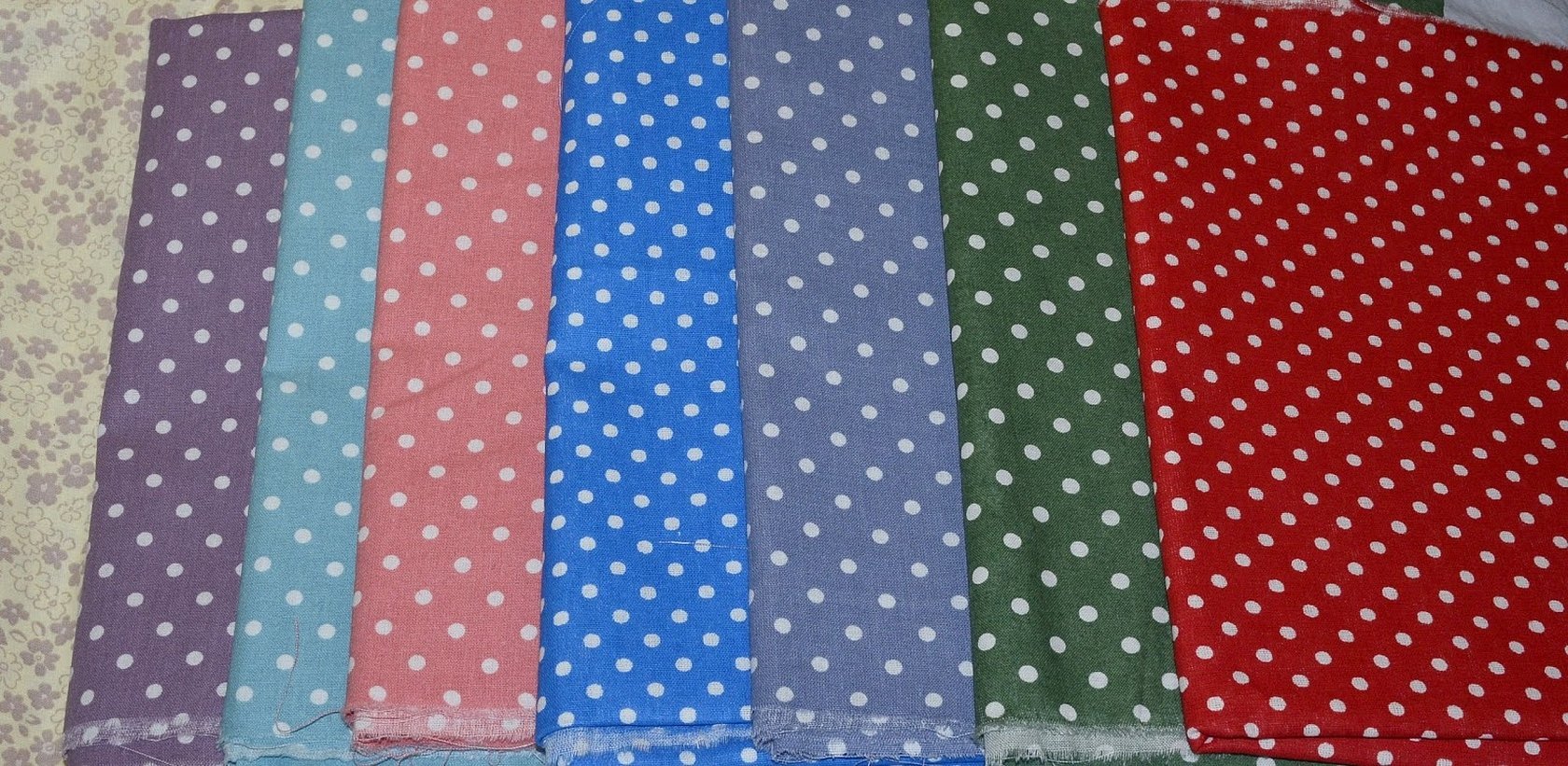
There were two varieties of it:
- hanagai - high-quality calico;
- shilya - ordinary.
Until the beginning of the 20th century, the scope of application remained within the boundaries of lining fabric for coats, material for dresses. Later, beautiful dresses, suits began to be sewn from it, and the most popular direction appeared - bed linen.
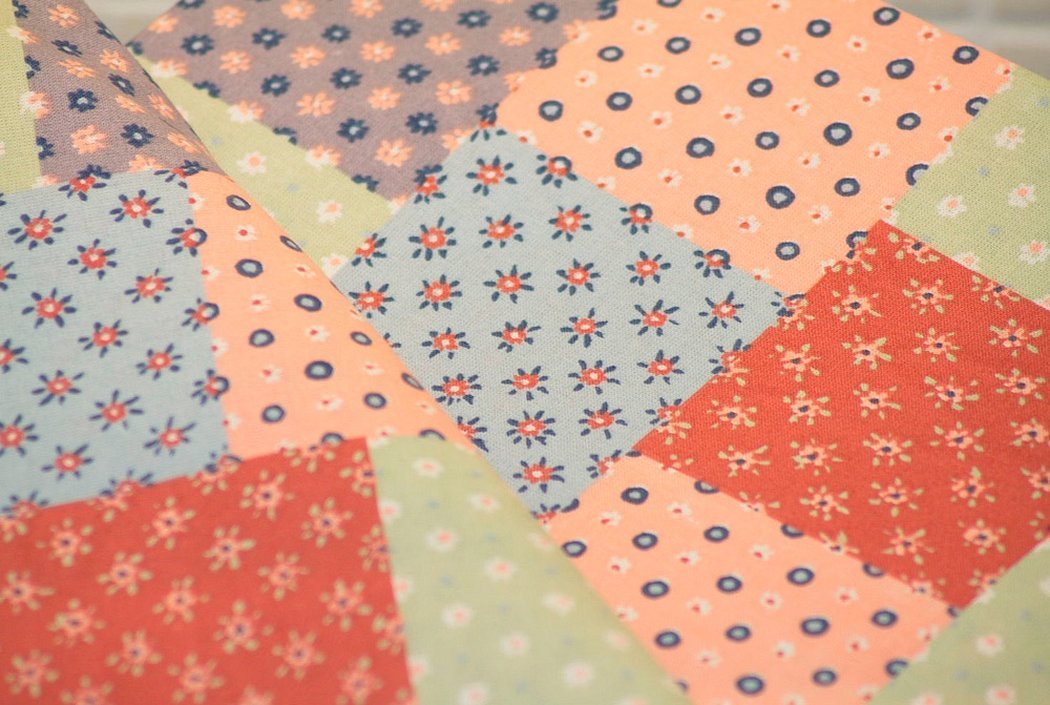
Description of weaving, composition and properties
Calico is a fabric made entirely of cotton. It is produced in sheets 150 cm and 220 cm wide. The structure is uniform on the front and back sides. It is obtained by cross-weaving cotton threads “thread through thread”. The warp and weft threads are the same size and are intertwined evenly, without shifting. The denser the weave, the greater the strength of the material. Due to its natural composition, the material is hypoallergenic, which pleases manufacturers of children's clothing.
Chinese, Turkish and Pakistani manufacturers produce fabrics that are partly made of polyester fibers. But the main percentage is still cotton. Thanks to it, calico fabric has the following characteristics:
- pleasant to the touch;
- breathable, the fabric "breathes";
- absorbs moisture;
- wear-resistant.
Important information! Russian standards provide for only one type of calico. This may be the name of a material that contains 100% cotton. Calico supplied from other countries may contain polyester threads. Before purchasing, you should pay attention to the country of manufacture.
The strength of the material directly depends on the density of the fabric. A good indicator is 140 g / m2. Low-density fabric can be easily distinguished - when visually inspecting the unfolded fabric, gaps between the threads will be visible, the cross weave is very pronounced.
According to density, the following types are distinguished:
- sparse - density 100 g/m2;
- density 120 g/m2 - comfort or standard calico;
- density 140 g/m2;
- raw - density 145 g/m2 and higher;
- luxury fabric - threads are 1.5 times thinner than for regular calico, due to which the fabric is smooth and soft.
- ranfors fabric is made only from natural cotton, but it is processed in a special way.
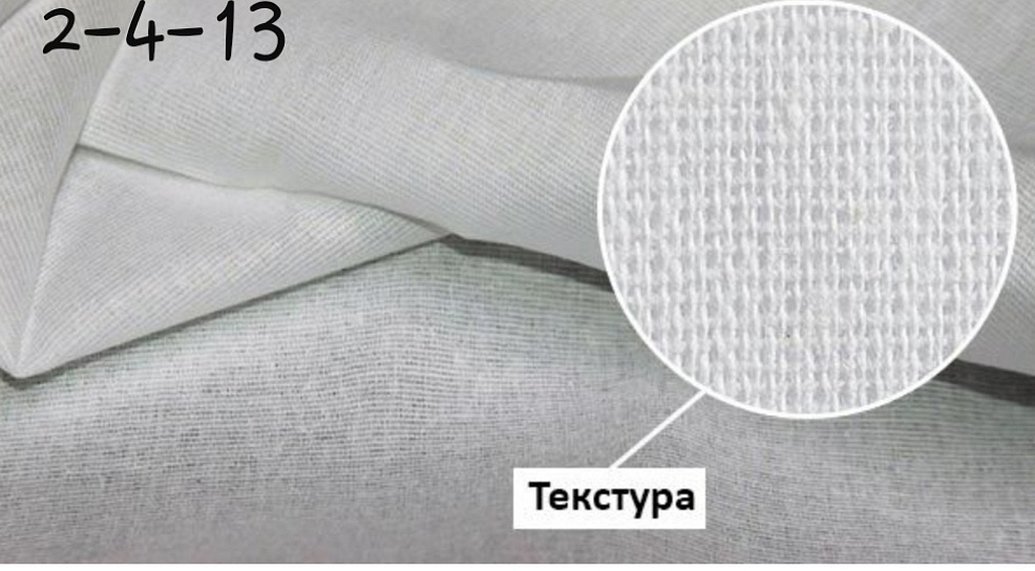
Types of calico
The material was initially rough, without a pattern and unpainted. Later, with the development of textile production, the fabric began to be dyed in various colors and with a pattern applied. This gave the fabric smoothness and allowed for a wider range of applications.
Depending on the dyeing method, fabric can be:
- Plain dyed - a single-color fabric is evenly dyed in specified colors, similar in structure to bleached fabric.

- Printed calico is a fabric with a pattern, it can be very diverse, any color. It is applied by machine printing.
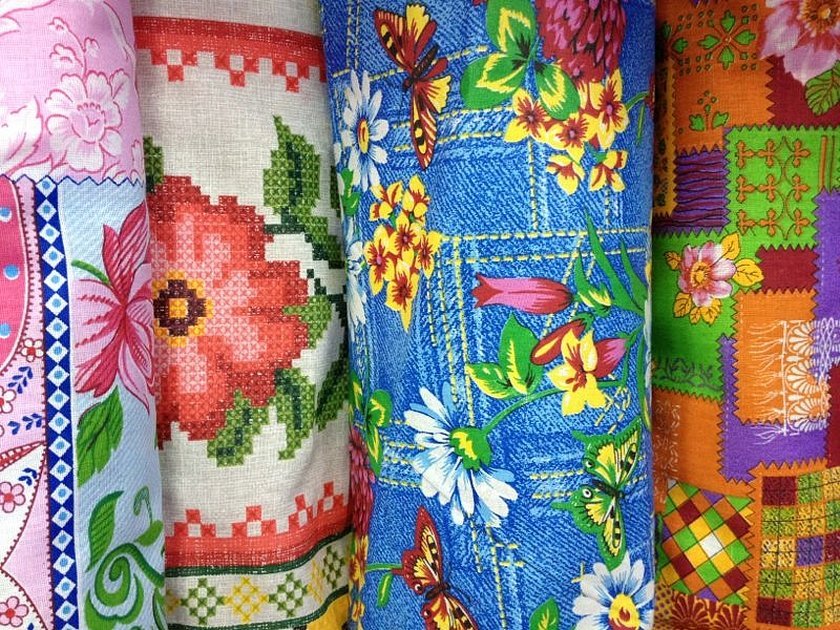
Cotton fabric is not only calico. Satin, percale, poplin are also produced on the basis of cotton threads. What is the difference between them?
The main difference is in the weaving method and the thickness of the threads.
| Textile | weaving |
| calico | Thick cotton threads. The cross weave is clearly visible. |
| percale | Long-fiber varieties of cotton are used. Plain weave. The material is delicate and soft. High strength. |
| poplin | The closest material to calico, the weave is the same, but the thickness of the thickest poplin thread is less than that of calico. |
| satin | The weaving of the threads is unusual – through 3-5 threads. Cotton threads of two types, thicker for the base, twisted – for the front side. |

There is also chintz fabric. They have the same weave as calico, but the threads of chintz are much thinner. The width of the fabric is within 90 cm, so it is not a very good choice for bed linen - there will be a seam in the middle of the sheet. It does not hold color well, the colors wash out quickly. But it is much cheaper than all other fabrics.

What is sewn from calico?
The thread density, dyeing and finishing method determine the scope of its application.
- The densest calico, which has a pleasant milky shade, unbleached and undyed, is called raw. It is successfully used for upholstery of interior furniture elements. Fabric impregnated with a special composition is used for sewing work clothes.

- A more delicate fabric, bleached, is used for bedding in hotels, sanatoriums, for tablecloths and napkins in restaurants and cafes. For medical institutions, robes, sheets, towels are sewn from it; white calico fabric is ideal for this.
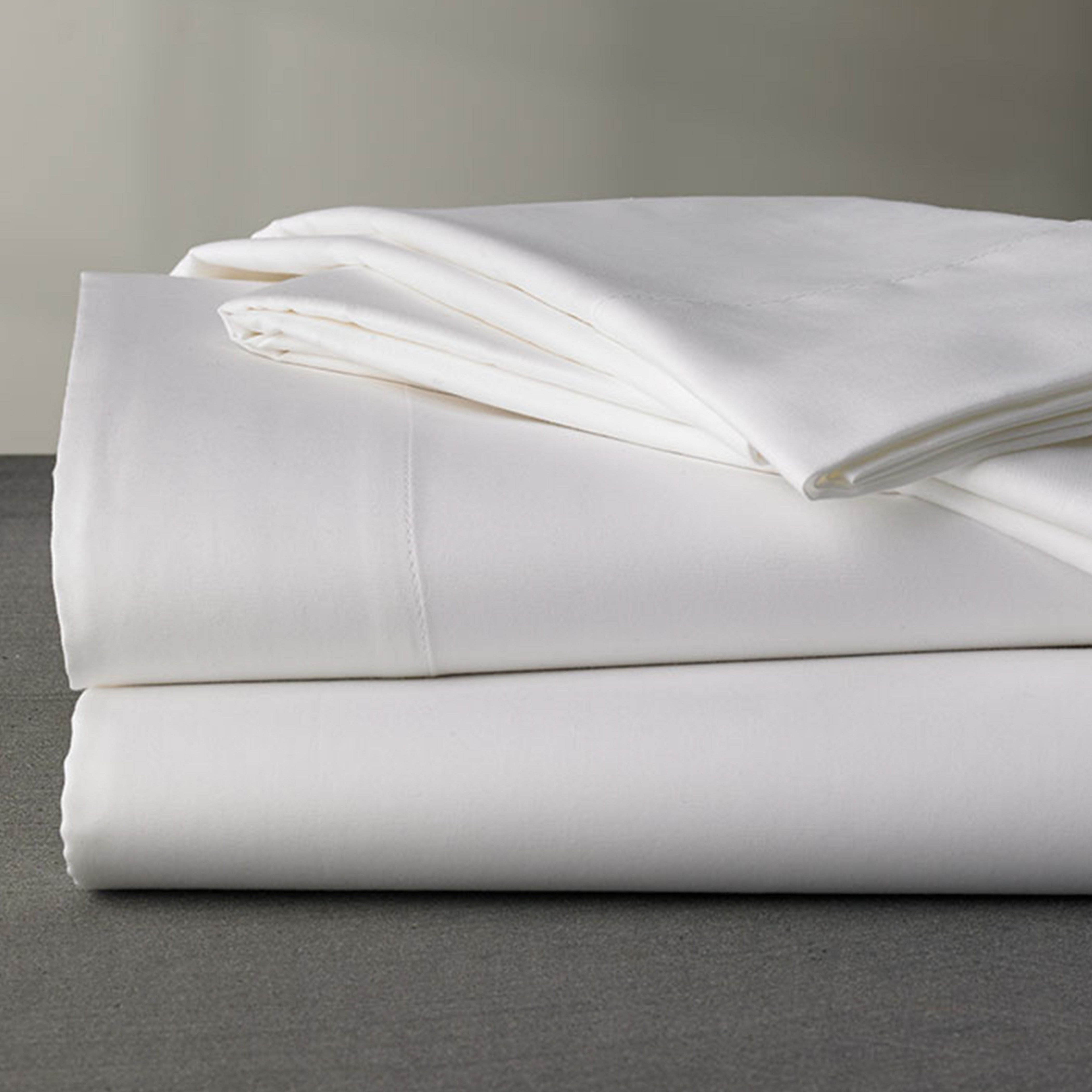
- Plain dyed – used for lining outerwear and suits, home textiles, bed linen.
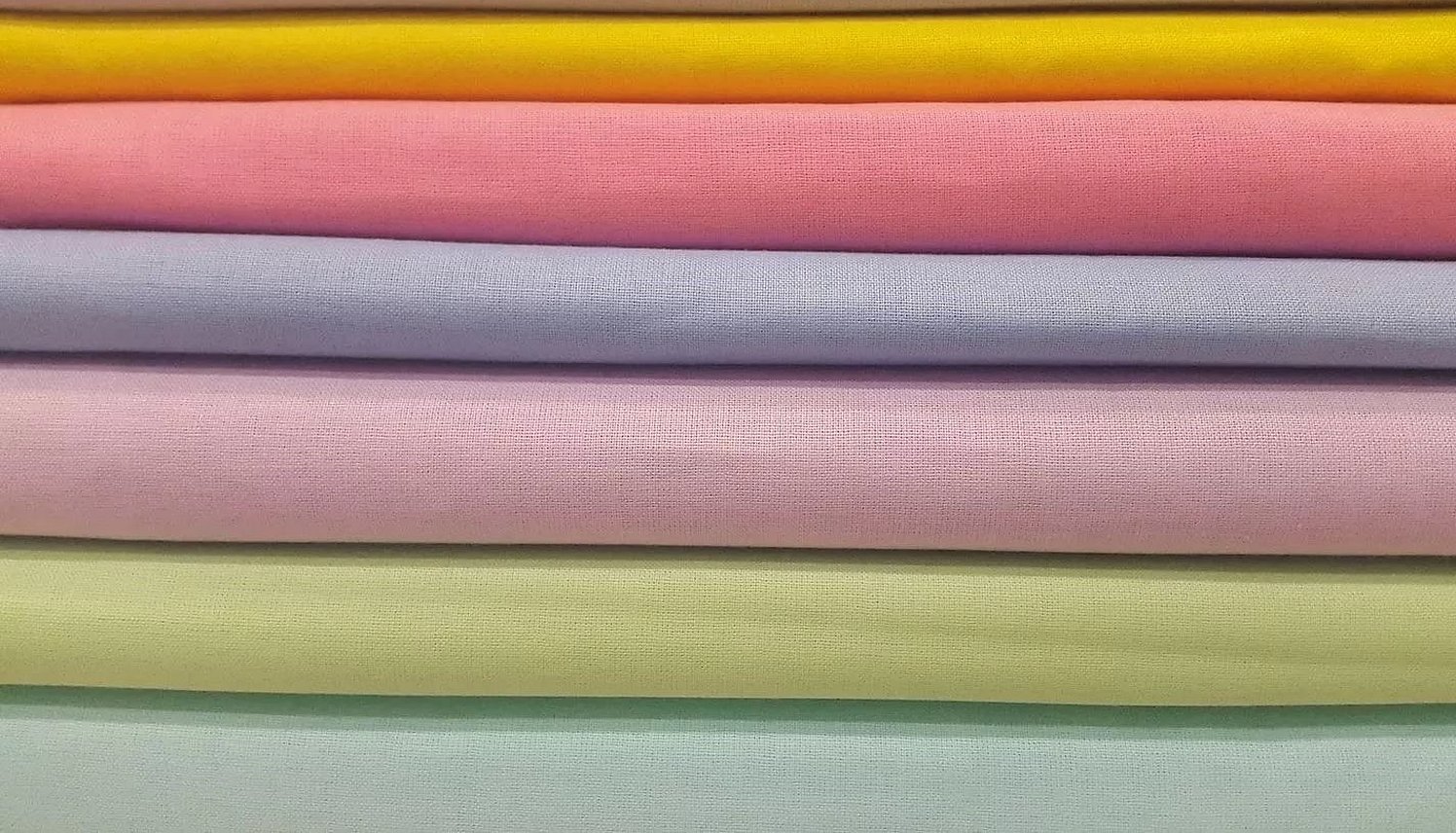
- Printed is the most beautiful, elegant material. The colors delight the eye with bright colors. Its area of application is the widest: bed linen, children's and adult clothes, home festive tablecloths complete with napkins and towels.
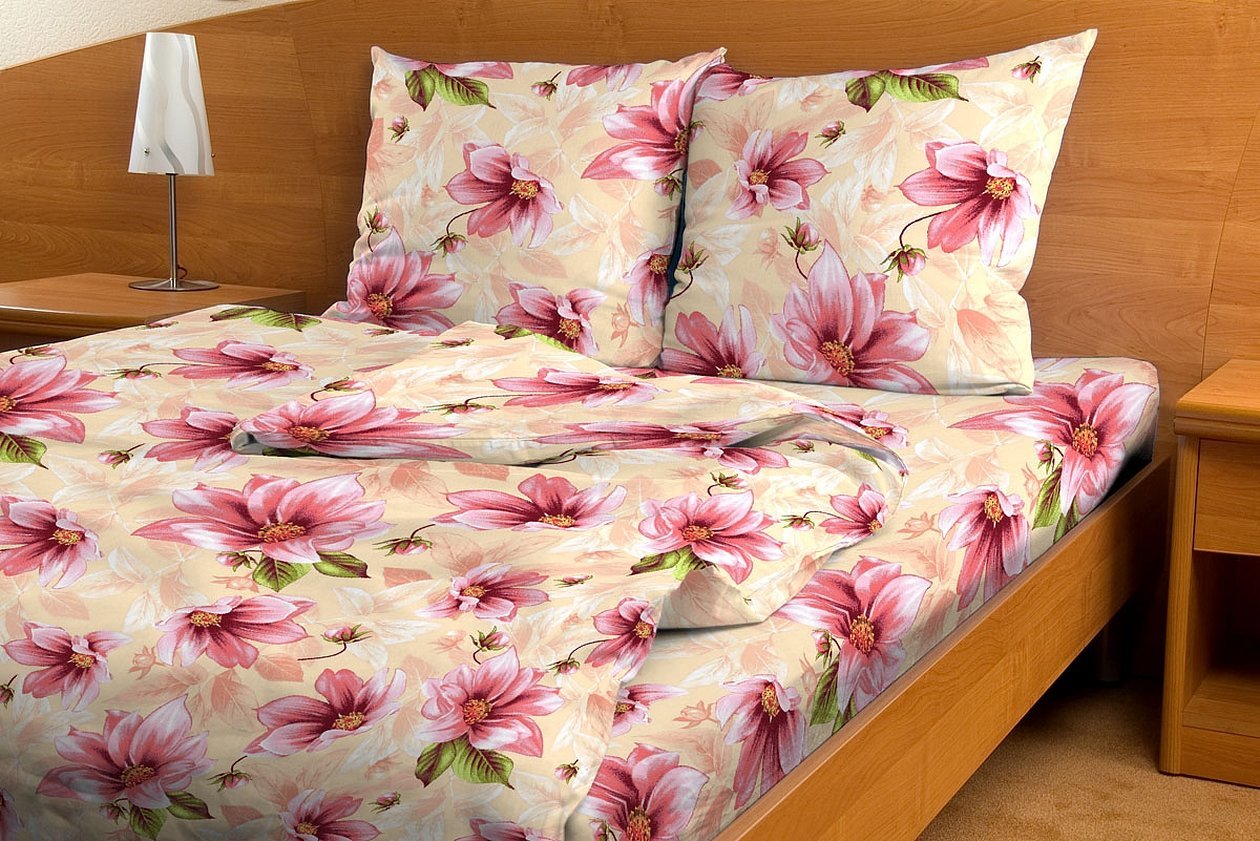
Important information! One of the areas of application is the mining and chemical industries. There, calico is used as a wiping and filter material.
Rules for material care
This is what you can appreciate about this material, its unpretentiousness. It can withstand many washes and does not wear out. But it is still worth paying attention to the manufacturers' recommendations:
- set the temperature regime according to the information on the label;
- Manufacturers recommend turning bed linen inside out before washing;
- do not use bleaches, this is generally harmful to almost all types of fabric, its structure is destroyed;
- You can use fabric softeners, they make the products softer;
- You can dry it either in a washing machine or in a regular home dryer;
- It is better to iron a slightly damp cloth or use the steam function on the iron.

Advantages and disadvantages
The advantages are:
- affordable price - much cheaper than satin, silk. In terms of quality, it is slightly inferior - thick calico can be a worthy competitor to satin, if the question is about choosing bed linen;
- simply amazing wear resistance - withstands a huge number of washes, for which housewives appreciate it. The pattern remains the same, the color does not change;
- lightweight material, which is very important for bed linen;
- allows air to pass through well and does not create a “thermos” effect;
- environmentally friendly product, as it is completely natural;
- does not accumulate static electricity;
- high strength material;
- easy to care for;
- UV resistance.
There are also disadvantages:
- after the first wash the material shrinks;
- there is no noble shine (like satin, for example), the surface is smooth, but matte;
- After numerous washes, pellets may appear.
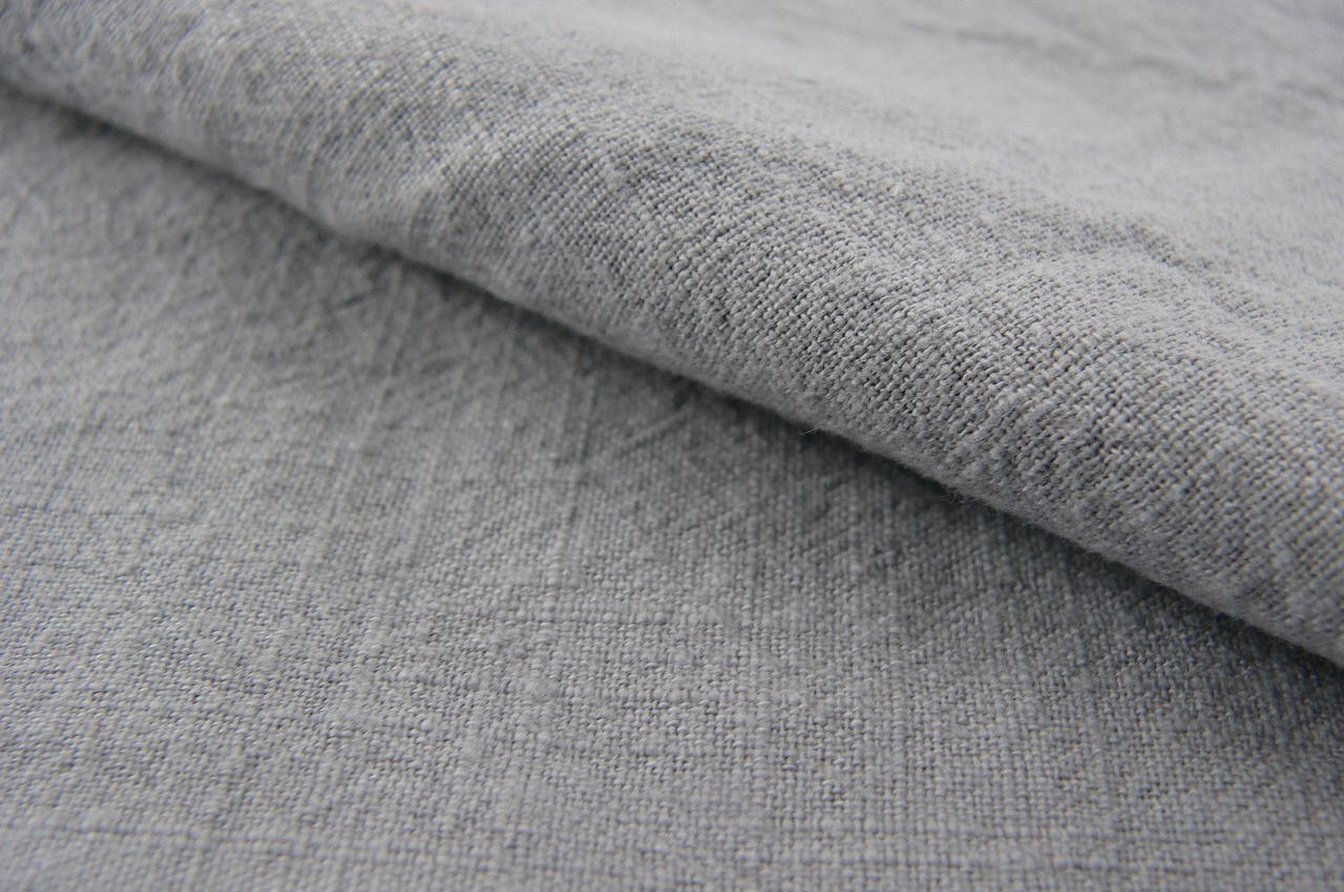
Different calico from different manufacturers
The quality of the fabric directly depends on the manufacturer. Russian manufacturers (Ivanovo) use only 100% cotton, so calico products have all the properties of natural fabrics. Bright colors, intricate patterns and affordable price. The fabric is slightly inferior in density characteristics to other manufacturers, but due to the low price it is in great demand.
Turkish calico is popular all over the world. The fabric contains 100% cotton or a maximum of 15% synthetic additives. The material is light, dense, does not wrinkle or roll. Very bright colors.
The largest supplier of calico fabric is Pakistan. Pakistani calico consists of 80% cotton and 20% synthetics. The material is lightweight, breathable, and retains heat. It does not wrinkle, and is extremely durable and dense. But its price cannot be compared with Russian calico. You will have to pay a pretty penny for such material.
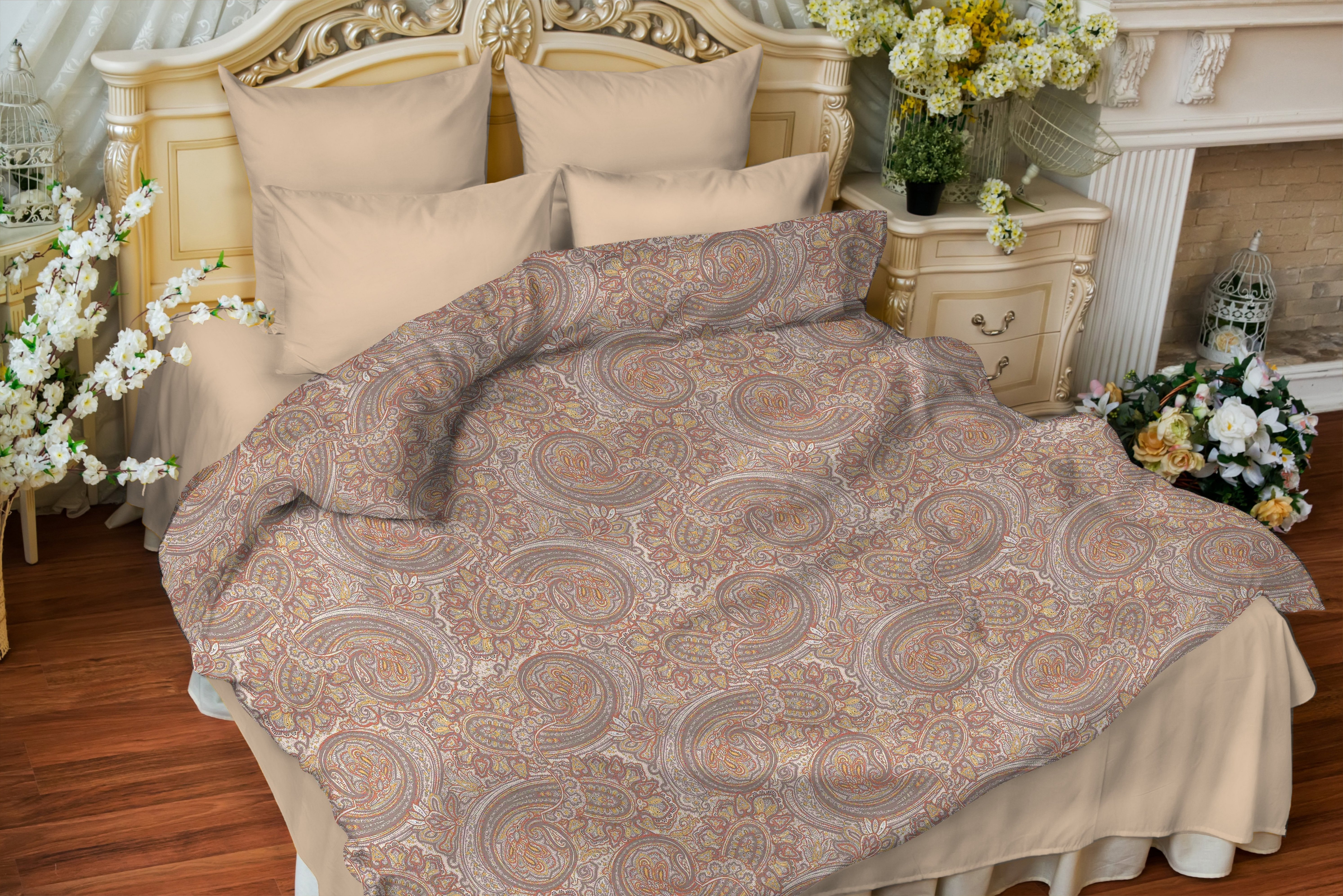
Reviews
Alexandra, 21 years old:
"I recently became a mother, and I faced the problem of buying children's clothes and diapers. Having studied the entire range, I came to the conclusion that it is best to buy clothes made of calico. It is inexpensive, and washes off stains well. It looks just as good after washing, and the colors do not fade. And most importantly, it contains only cotton. This is important for children, as they will not develop allergies to the clothes."
Margarita, 42 years old:
"I buy bed linen made of calico. I am satisfied with the quality, because I choose only thick printed calico, carefully looking at what kind of fabric it is. Before buying, I always unwrap the package and look at the composition of the calico fabric. Turkish calico can have viscose added, but I even like it, it is smoother."
Calico confidently holds its position in the bed linen market, and not only. Children's cotton clothing, white coats for medical institutions - it is used everywhere and is always in demand. An exceptionally high-quality ecological material at an affordable price that will last a long time - this is calico. Having chosen it as a fabric for linen and clothing, no housewife will regret her choice.




